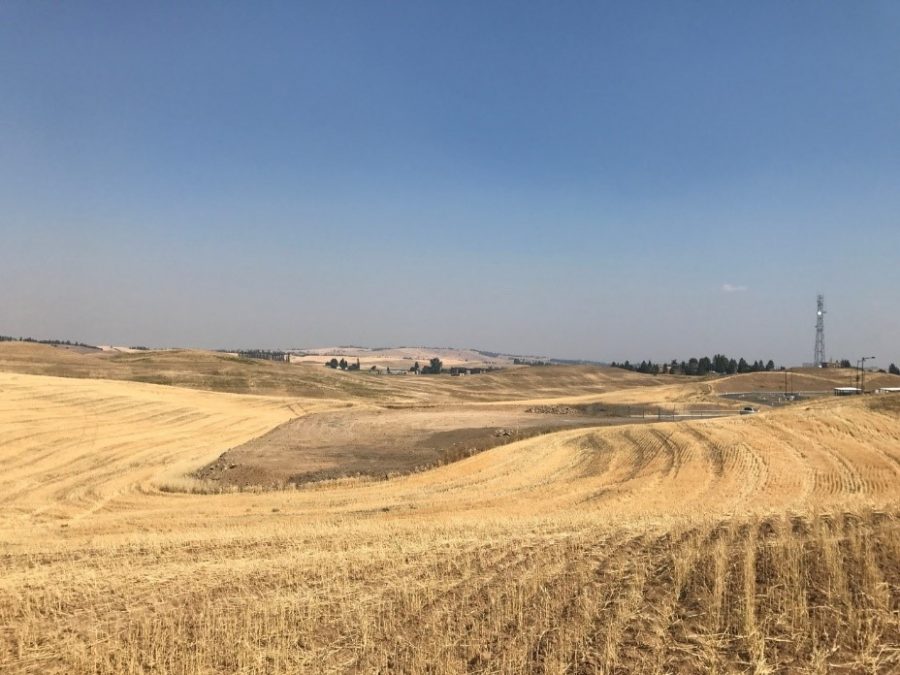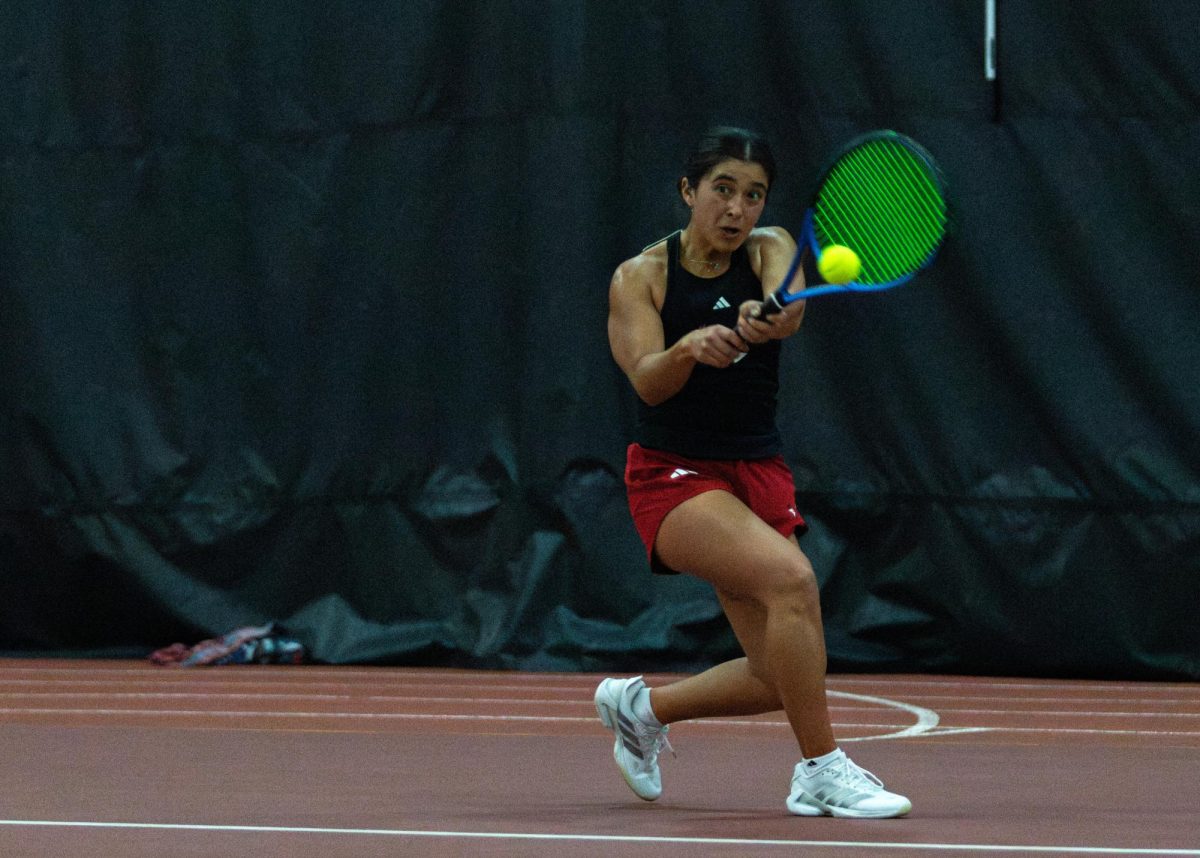Office of Sustainability moves ahead with new project
EWU sets plan to restore farmland and preserve natural land on campus
The current site of the Palouse Prairie Restoration Project. This 140 acres of EWU-owned land has been used as wheat cultivation since 1953.
April 25, 2018
With less than 1 percent of the Palouse Prairie remaining today, EWU is embarking on a revival journey by restoring the once flourishing ecosystem and pursuing the Palouse Prairie Restoration Project.
The university itself is about 340 acres, and of that land about 140 acres is stretched across campus behind Roos Field, which has been used as wheat cultivation since 1953. During summer 2017, EWU Sustainability started the project to turn that land back into its native prairie form, saying that the campus and community would benefit vastly from it.
“We decided that while wheat farming is a great thing, that we could use this land a little bit better for campus purposes,” said Erik Budsberg, Sustainability Coordinator and Project Manager. “What we’re looking at is taking it out of wheat production and restoring it to native grasses and native habitat on campus.”
EWU Sustainability is starting this project with four conceptual goals in mind: creating educational opportunities for the students, faculty research, recreation and value toward the broader community.
In order to pursue its focal goal of promoting educational opportunities for students, the project is exploring options like outdoor classrooms within the area, various research opportunities and informational kiosks along the trails in the region.
“The phenomenal thing about it is it’s so close,” Justin Bastow said, assistant professor in Biology. “We are really fortunate in this area on how much natural habitat there is around, but it can still be difficult to get a class way down in the Palouse in a three-hour lab period and back.”
Bastow and other faculty who are a part of the biology department at EWU have already started getting involved with the project and conducting their own research during the early stages.
“This is a great opportunity for a lot of faculty to do various extra research, apply for grants and really track this process,” said Budsberg. “Part of that is collecting baseline data. So they have to collect data with the site as it is now. So we’re working with them to make sure that we can stay on track with that, stay well informed and so just really valuable work that they are doing.”
A major aspect of this project is making sure that everyone who wants to be involved feels welcome and free to add their input. EWU Sustainability has already been working with the athletic department to further pursue it’s recreation goal. They have also reached out to students who are involved in public health to explore community outreach.
“I think my biggest concern right now is just trying to reach out to people,” said Budsberg. “I don’t want to exclude people from the process.”
According to the project timeline, the physical start of the restoration work is set to begin fall 2019. The process of maintaining the success of the restoration project is planned for fall 2024.
“It is kind of big, remarkable and unusual for a university to be doing such a big restoration project […],” said Bustow. “I mean the grasses are pretty easy to get established. In terms of kind of getting back all of the diversity that was there in the Palouse, that one’s a little bit trickier. So that may take some more time and more hands and effort by us, but there’s a lot of folks who are really fascinated and following it.”
For more information and to get involved with the project, you can contact EWU Sustainability directly on its webpage on the EWU website.








